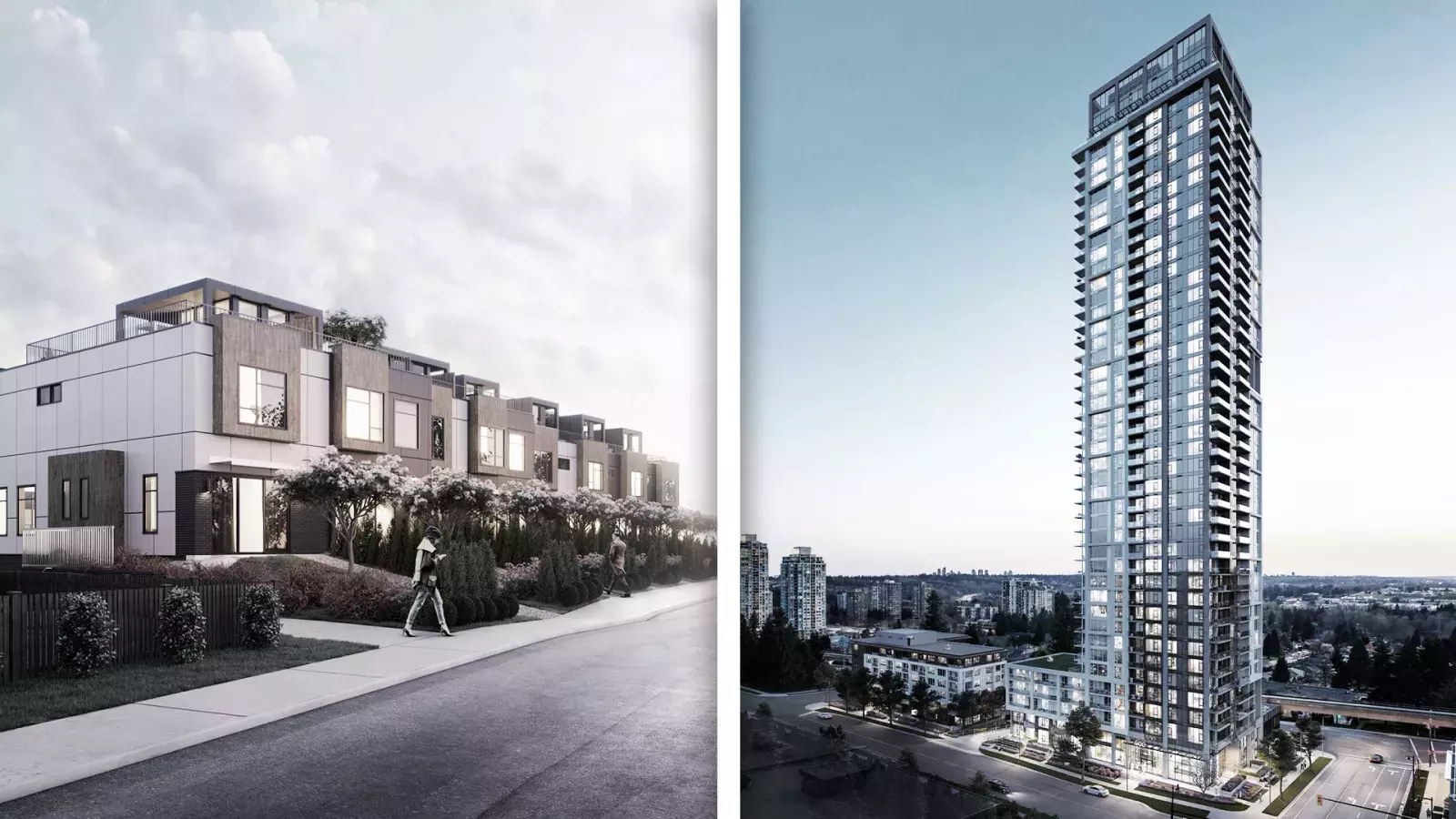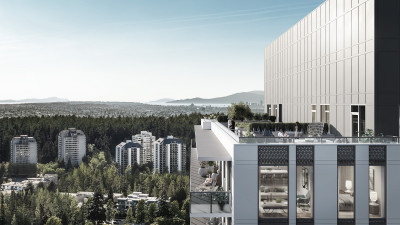One of the first big decisions a building developer must make is around the main construction material of each project: wood or concrete. Within the Lower Mainland both concrete and wood frame buildings are popular for different uses and in different areas. Wood frame developments accounted for nearly 40% of the newly launched products and 50% of the newly released pre-sale inventory in the lower mainland in August. The majority of the the wood frame projects launched were in the Fraser Valley, where price sensitive investors and first-time homebuyers are drawn to wood buildings. However, concrete condominium construction remains strong and is set to increase throughout the fall. Just as developers make material decisions at project conception, homebuyers must then decide how building materials will impact their purchasing decisions by weighing the differences between the two main choices.
Different materials for different building types
Often, the type of home a buyer is seeking to purchase will dictate the material the building is made with. If you are looking for a high rise, the building is almost guaranteed to be a concrete building. Concrete construction has been the most popular choice for skyscrapers worldwide since the early 20th century. Conversely, low rise and single-family units are most often wood frame.
Within British Columbia, building code dictates that the majority of buildings above six storeys must be made from concrete due to its more sturdy and durable properties. Homebuyers looking to purchase in the downtown core will most likely be looking at concrete options, while those looking for a townhome or single-family unit in the less dense areas of the Lower Mainland will have more wood frame options available to them.
When looking at multi-family units, the buyer must consider privacy implications as well. Wood frame buildings are less likely to provide sound insulation, whereas concrete buildings are usually preferred in condominiums and shared buildings due to their reduced noise transfer.
Upfront cost and long-term value
One of the largest distinguishing factors between concrete and wood is in their building costs. Wood offers a significantly lower build cost, which in turn translates to a lower cost to the buyer. As a natural resource that is readily available, wood is also easier to work with and lighter to transport, both of which bring down construction costs. Concrete is heavier and difficult to transport, making it slower and more expensive to build with. These increased construction costs mean the homebuyer will pay more for less square footage. However, a recent spike in the costs of lumber have put this significant advantage to wood construction at risk.
Homebuyers should be mindful of how a building material may impact the long-term value of their new home and a resident’s budget. Concrete absorbs and retains heat and moderates temperature, reducing energy costs to those living within the home. Concrete buildings also tend to hold their value, proving to be a strong property investment choice. Due to the nature of wood, maintenance and heating costs will lean slightly higher compared to a concrete building.
Sustainability implications
Another decision-making factor that developers and buyers use to choose a preferred building material is sustainability. Declaring which material is more sustainable is complicated, as each has different environmental implications and carbon footprints to consider.
The forestry industry is a controversial one, and logging for wood is often perceived as having a negative environmental impact. Those inclined to use wood in construction would note that the industry is more increasingly favouring sustainable practices in the harvesting of wood, reducing that negative effect. Wood is a readily available natural resource that is easily biodegradable if no longer needed.
Concrete, on the other hand, is not renewable and uses a not-insignificant amount of water in its production. As with any manufacturing process, the production of concrete requires energy and produces pollution, making concrete a contributor to greenhouse gas emissions. However, concrete is more durable than wood and lasts two to three times longer, reducing needs for new builds. The fact that it retains heat in the winter and increases cooling in the summer makes for more energy efficient homes.
Cost implications, building limitations and environmental impact are among the most discussed elements of building material choices, but there are additional areas to be considered by homebuyers before purchasing one construction type over another. Talk with your real estate agent for more information on the pros and cons of wood frame vs. concrete construction.



